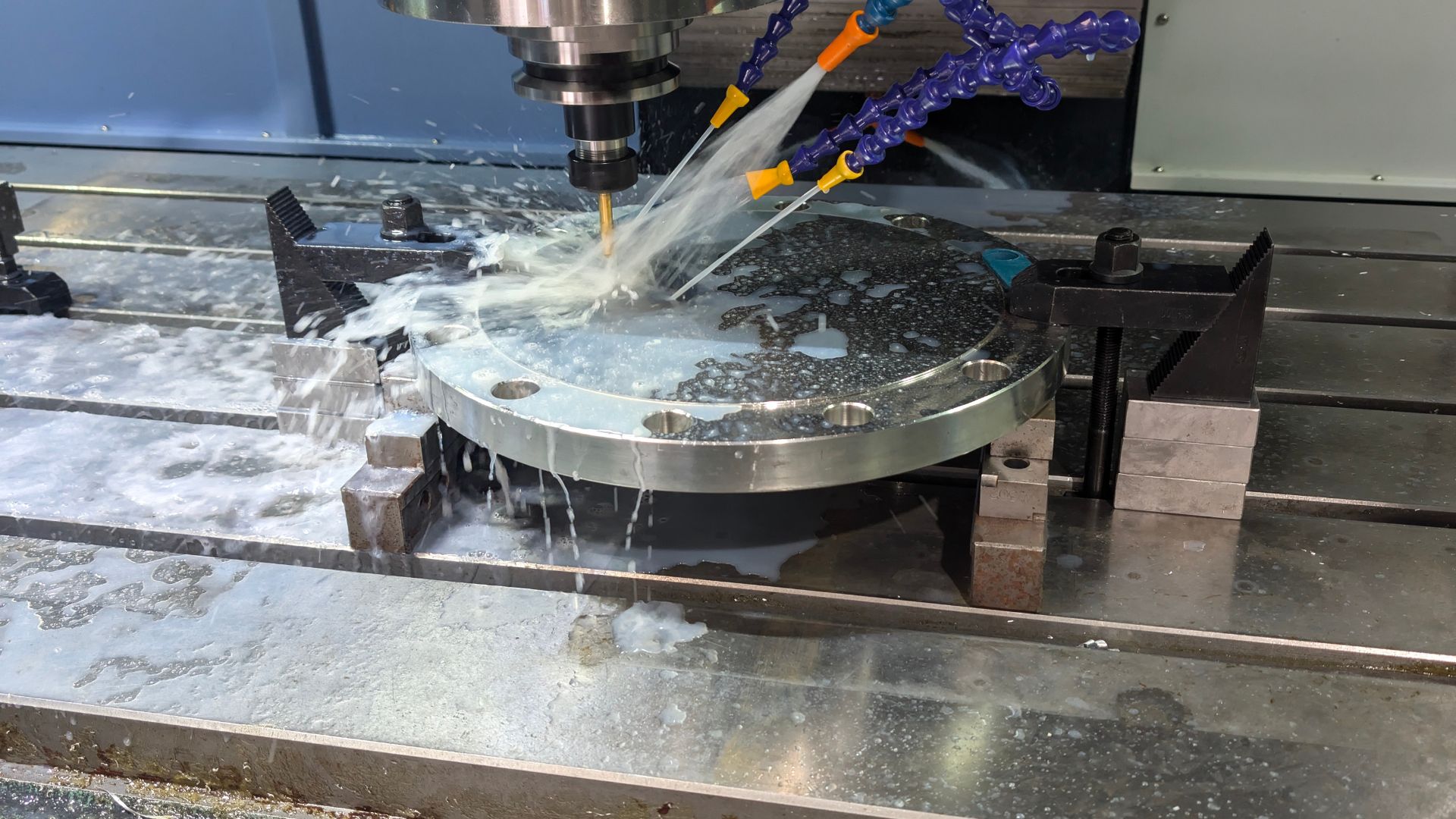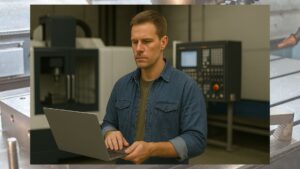
Table of Contents
CNC machining and metal fabrication are manufacturing processes for making metal products. Both methods are essential and hold their places in manufacturing. Each method has a different process, and choosing the right one depends on your project’s needs.
In simple terms:
- Metal fabrication uses cutting, bending, welding, and joining techniques to form a piece from raw materials.
- CNC machining is a process that shapes a part by removing material from a solid block.
I. What Is CNC Machining?
CNC machining is a process where a computer controls a machine to remove material from a blank metal piece. A design is created in a Computer-Aided Design (CAD) program and turned into instructions for the CNC machine. These instructions guide the machine in cutting, drilling, turning, and milling the metal. This method is known for its accuracy. When you need many identical parts or very detailed shapes, CNC machining is a strong choice. Its ability to handle complex curves and intricate details makes it ideal for projects that require precision. CNC machining processes can deliver tight tolerances and a smooth finish. With CNC machining, the process becomes repeatable and efficient, making it perfect for large production runs.II. What Is Metal Fabrication?
Metal fabrication is a hands-on process that involves several steps to build a product. Skilled workers start with raw materials such as metal sheets, rods, or bars. They cut, bend, weld, and join these materials to form the final piece. Unlike CNC machining, which removes material, fabrication often joins pieces to build a component. This process is very flexible and is useful when working with sheet metal or creating structures on-site. Fabrication shines when projects need a custom approach and when working with thin metals or unusual shapes. It is often the method of choice for one-off projects or large-scale jobs like construction and infrastructure work. While fabrication can be more time-consuming and might not always match the precision of CNC machining, its versatility and lower setup cost make it a good option.III. Key Differences Between CNC Machining and Fabrication
CNC machining and fabrication methods work with metal but differ in many ways. Here are their main differences:CNC Machining
- Precision and Speed: CNC machining offers high accuracy and can produce identical parts quickly. It is perfect for jobs that need detailed shapes and consistent results.
- Automation: Because it is computer-controlled, this process reduces the chance of human error. It is ideal for CNC machining milling, where every cut must be perfect.
- Safety and Efficiency: CNC machining is generally safer because of less manual work. It also offers a quicker turnaround for large runs.
- Limitations: The equipment is expensive and needs skilled technicians to set up and run. Also, CNC machining may not be the best choice for parts with thin walls or complex internal designs.
Metal Fabrication
- Versatility: Fabrication is excellent for working with a variety of metal forms. It is ideal for projects involving bending, welding, or joining materials.
- Lower Equipment Cost: The tools for fabrication are usually less expensive, which is ideal for smaller companies and start-ups.
- Customisation: When every project is unique, metal fabrication offers the flexibility to adjust the process. Construction and custom projects use it.
- Challenges: Fabrication is slower because it involves manual work and can lead to inconsistencies if not carefully done. The process is also more prone to errors due to the many steps involved.
IV. Which Process Should You Choose?
Choosing the method depends on several factors, which include:- Design Complexity: Does your project involve complex curves and tight tolerances? CNC machining is likely the better choice. Its precision makes it ideal for custom machining and CNC machining milling.
- Production Volume: CNC machining saves time and ensures consistency for high-volume runs where every part must be identical. Metal fabrication is more suited for one-off or smaller production runs.
- Material and Location: If you are working with sheet metal or require work to be done on-site, fabrication is a strong contender. Its flexibility means it can handle different materials and environments.
- Budget and Equipment: CNC machining offers high precision but demands higher equipment and setup costs. Fabrication, though sometimes less accurate, can be more cost-effective for projects that do not require mass production.
Deciding Factor:
- CNC machining milling is the best choice if you want high precision and fast repeatability and are working on a design demanding detailed curves.
- Metal fabrication might be better if your project demands on-site work, uses various raw materials, or is a unique build.


